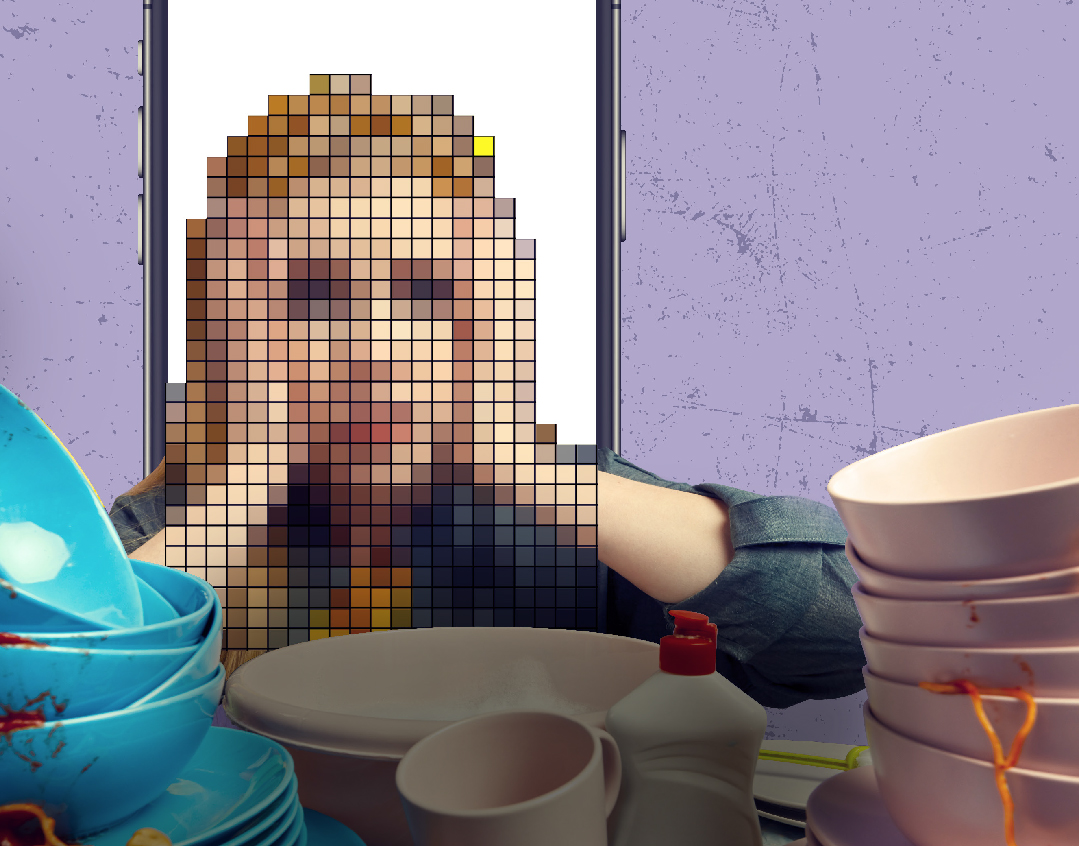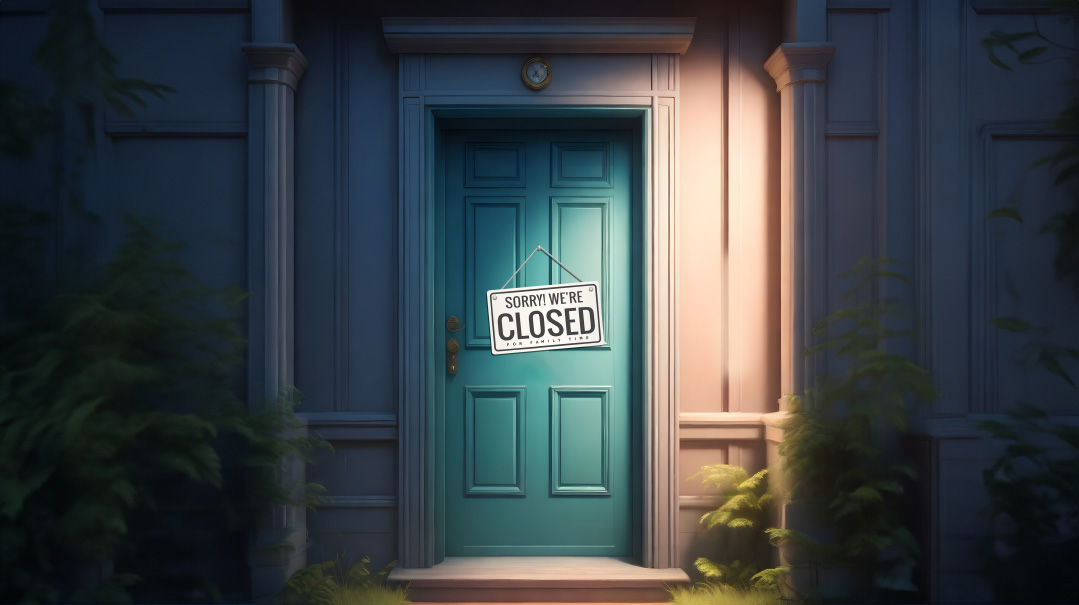For All the World to See
| June 29, 2021“I’m not sure how many clients will be happy to give their names. I mean, it’s a bit of a personal thing, you know, having used a home organizer..."

Rachel: Can’t you stretch a little to help me grow my business?
Shiffy: Do you honestly not understand how demeaning it is to have my vulnerabilities exposed to all your followers?
Rachel
"There’s only one way to make it professionally these days,” my sister-in-law, who works as a senior marketing strategist at some technology firm, told me. “And that’s by marketing, marketing, marketing.”
At first, I wasn’t so sure I agreed. “Of course you’d say that, you’re a marketer,” I told her playfully. “But c’mon, I’m a freelance home organizer working with women from our own community... what’s wrong with the good old word of mouth, and a couple of ads in the phone book? If people need me, they’ll find me.”
Yonina adamantly disagreed. “The world doesn’t work like that, honey,” she said, in that patronizing tone that made her sound like I was three decades younger than her, instead of three years. “You’ve got to tell people they need you. Sure, you’ll have customers who know they need help with keeping their homes organized. But think about how many people don’t even realize they could improve their housekeeping skills! How many people hate the way their closets look but have given up on changing it? How many people know they need help but don’t know where to find it?”
I wished I could argue, but the problem was, I had a niggling feeling she might be right.
“I wish I had heard about you earlier,” a client told me recently. “I’ve been struggling with creating housekeeping systems for years.”
“I posted to my Neshei group for recommendations of a home organizer in the area, but there were so few responses,” another one had said. “I think it was your sister Shira who sent me your name. Are you just starting out?”
I wasn’t. I’d been in the field for almost two years already, but I still only had a paltry handful of clients each month. There was a need for my services, I knew that, but people didn’t seem to know about me.
Finally, I gave in and texted Yonina: Can you recommend me someone to do my marketing/branding? Not too expensive.
She replied instantaneously with a thumbs-up emoji, a few starry-eyed smileys, and a couple of names. I made a few calls and finally hired someone to work with me on recreating my brand and getting my name “out there,” as Yonina liked to say.
It wasn’t cheap. The design, the copy, the website costs... it was a big investment, and I sure hoped I’d see a payoff for all the time and money I was pouring into this. Meanwhile, with only two current clients, I had plenty of time to focus on upping my game in the marketing arena.
“Testimonials,” intoned Dafna, the branding expert I’d hired, one day when we sat down for a strategy meeting. “We need more testimonials. Clients who’ve been happy with your work. Clients whose lives have changed. We need real quotes, feedback, names, and faces.” She looked at me expectantly.
“Um, client testimonials?” I scrolled through my previous clients in my head. Old Mrs. Blum who wanted to reorganize her kitchen to make her things more accessible when her arthritis made reaching the upper cabinets difficult. Was she happy with my work? Probably, but then again, I doubted she even remembered my name. Faiga Horowitz, who was constantly battling laundry loads and mess and toys and needed smooth, easy systems to keep her house running while she juggled a full-time job and large family? I could ask her, but...
“I’m not sure how many clients will be happy to give their names,” I said, hesitantly. “I mean, it’s a bit of a personal thing, you know, having used a home organizer... will people be happy to publicize their names?”
Dafna marked something down and frowned. “I think we should still try,” she said. “How about you reach out to all your clients and see if any are comfortable for me to interview them, just a few minutes on the phone, to gather some data and testimonials? We do need that social proof.”
“I’ll try,” I said, wondering whether Kaila Oren would be willing to give her name. She’d raved about the work we’d done together in a marathon session to reorganize her playroom, kitchen, and bedrooms before her in-laws came for an extended visit; I couldn’t remember ever filling so many garbage bags in one session.
“The other thing is content,” Dafna said, tapping her pen against her paper thoughtfully. “That’ll help your website SEO, too… and I think it’s your best bet in a situation where it’s hard to get testimonials.” She looked up. “Here’s what I’m thinking. You’ll have a blog on the site, you’ll tell stories, no names, but you’ll include before-after pictures, if you can. You’ll show readers how you resolved home organization problems for clients, or you’ll give tips and examples of streamlining home management systems, or you’ll have posts where you answer questions submitted by readers.” She drew a heavy line under the scribbled word blog. “We’ll put up links to those posts on your social media pages, on LinkedIn… it’ll generate new web traffic, people will read the posts and be impressed at your work, and hopefully they’ll check out the rest of the site and hire you to help them. Or, they’ll recommend you on to other people. We want your name to be synonymous with fabulous home organizer.” She grinned. “How does that sound?”
I smiled back. “Sounds great to me.”
The crazy thing was, these strategies really worked. I continued working with my two clients, wrote weekly blog posts, we cobbled together a few testimonials, and traffic to my still-new website started to increase. My email list built up, and the number of views on my blog posts started to climb. I had a few email queries, a couple of calls, and a well-known women’s magazine asked to interview me for a feature on time management for busy moms. Then I landed a new client.
Shiffy was a young SAHM with three kids under five. She had the baby and toddler home most of the day, in a small apartment with a lot of mess. From our initial phone consultation, it was obvious that Shiffy didn’t have any systems in place to help her streamline the laundry, the cooking, the cleaning, even her kids’ bath- and-bedtime.
“I’m just so overwhelmed,” she told me honestly. “And I saw your website, it sounds like a dream… to have everything clean and in its place so that running the house is easier…”
I was happy to hear her reference the website. It had been such a huge investment, but it seemed the outlay was starting to pay off.
“I just… I was wondering about your rates,” Shiffy continued, a bit awkwardly. “It’s just… we’re on a very tight budget. I was wondering if you ever offer, you know, a discounted rate, or a package or something?”
I was surprised at the question. My rates weren’t exactly high. But it seemed that Shiffy was living on a shoestring budget. I decided to offer her a package deal — four sessions at a greatly reduced rate.
“Thank you so much, wow, I appreciate that,” she said gratefully. “I really need the help, it’s just that…”
“It’s my pleasure,” I assured her. “See you next Monday, then.”
I ended up meeting with Shiffy more than four times. I couldn’t just leave the job halfway done. Her apartment was small, but it needed a lot of work — in fact, the size made things a lot more difficult. Generally speaking, larger houses are easier to organize in terms of space, but more difficult in that a lot more clutter has been allowed to build up, out of sight in the corners or spare rooms.
In Shiffy’s case, though, not only was the apartment small, there was a huge amount of clutter as well. We had to sort and discard bags full of old clothing, her schoolbooks, broken appliances, toys and teddy bears and unused baby gifts, and countless other things — before we could even start on the organizing.
Slowly, though, we made progress. We organized the linen closet, and Shiffy was able to maintain the new system on her own for the next week. We went shopping together for pretty storage baskets for clothing and food storage containers for the pantry, keeping in mind Shiffy’s limited budget. We created a system whereby Shiffy would spend a short time every evening cleaning the kitchen. Until now, she’d been so overwhelmed that dishes would stay in the sink for weeks at a time, only being washed when they were needed — and then put right back in the sink.
The day we cleaned out those sinks, using heavy duty cleaning sprays to get rid of the mold and offensive odors, Shiffy was both overjoyed and mortified. I assured her that I wasn’t judging her, and I didn’t think any less of her for the mess she’d been accustomed to living with.
“In fact,” I told her, “I think you’re amazing. You’re such a great mommy, you take such good care of your kids, and you have a lot on your plate! It’s hard to juggle everything.”
I meant it. Shiffy was genuinely sweet, earnest, and well-meaning. She and her children were always dressed beautifully, she played games and did arts and crafts with them, and she was a whiz in the kitchen. She just wasn’t equipped with good home organization techniques, and had left things for so long that it felt almost impossible to get out of the bad habits.
When Shiffy “graduated,” I made sure to take pictures of her organized closets, tidy cabinets, and well-maintained rooms. They were for her to reference, but they were for me as well — I always made sure to take before-after pictures for my files, although I never shared them without permission.
Shiffy asked me to keep the pictures to myself. “It’s just… I’m really embarrassed, how it used to look like,” she shared, a little self-consciously. “And you know, I wouldn’t want people I know to see it…”
I can’t say I wasn’t disappointed — Shiffy’s home transformation would’ve been a great example for my portfolio. It wasn’t common to have one single project that showcased all my skills: the cleaning systems, the organization, rearranging furniture to maximize space…
Still, if it made Shiffy uncomfortable, what could I do? I assured her that the pictures would remain for my eyes only, and made a mental note to reach out again in a few months. Maybe after some time, she would feel comfortable with allowing the pictures on my site — anonymously, of course.
Meanwhile, I wrote up a long blog post, describing the satisfaction of “graduating” a client who’d been able to completely overhaul her home. I changed Shiffy’s name and all identifying details, but I kept the facts: the constant mess, the mold in the sink, the dirty laundry we’d found in the toybox, the clothing in haphazard piles along the floor because there was simply no space in the closets.
I explained how Shiffy and I had worked together to sort out every last thing in that apartment, tossing out nearly half of the contents of some closets, discarding anything that was worn out or broken, donating the clothing that she never used. How we’d cleaned and scrubbed the newly visible surfaces, and created systems for regular clean-ups so that the mess wouldn’t pile up again. The storage solutions we’d figured out to maximize her limited space, and the supplies we’d bought on a tight budget.
I added some links to the storage baskets we’d purchased, wrapped up with some tips for maintaining organization in a small home, and sent the post over to Dafna for her input. I liked writing my own posts, but I wasn’t a writer; she polished them up for me and posted them on the website.
The blog post was one of my most popular ones. I posted links to it on my LinkedIn and Instagram pages, and even without before-after pictures, people seemed to really enjoy it. Readers left several comments, both on the website itself and on my social media accounts.
Wow, you’re a superwoman, I would not have known where to start with such a situation!
Love what you wrote about long-lasting systems, so they don’t need you coming every week to reorganize.
Rachel, I have a TINY apartment, with one room doubling (tripling?) as dining room, lounge, and playroom. Any tips on how to keep the kids’ mess contained so we can use the living space?
I was in the middle of responding to comments when my phone buzzed. It was Shiffy.
I saw your post — can we pls talk?
I frowned at the text. What was wrong? She couldn’t be angry at me for putting up the post. I hadn’t used names, I hadn’t used pictures, I’d even changed details of her family size… there was no way anyone would identify her as the woman in the story.
“I know it didn’t say my name,” Shiffy said, her voice tight, when I called her a few minutes later. “But it feels really hurtful to be written about like that. Like, it made me sound dysfunctional. Mold in the sinks and dirty laundry with the toys…” Her voice caught.
Oh, no, was she crying?
“I’m so sorry you felt like that,” I said, helplessly. “But, you know, no one could possibly know that it’s you…”
“I know it’s me,” Shiffy said. Now she really started to cry. “You don’t know how hurtful it is. The comments on the website… people are writing such nasty things. ‘I can’t believe people even live like that!’ she mimicked. “It’s… it’s so invasive!”
I didn’t know what to say. “I didn’t realize you’d feel like that,” I managed. “It really wasn’t at all meant to hurt you…”
Shiffy sniffled. “I just… really hope you’ll take down the post,” she said, before saying goodbye.
I was left feeling conflicted, holding the silent phone. I didn’t want to upset Shiffy, or make her feel used and put down. But I needed this post for my website. It had generated so much traffic already, and taking it down would look strange. What about all the people who liked it and wanted to refer back, or read it again for the tips?
Besides, Shiffy hadn’t given me a testimonial, nor would she give permission for me to use pictures of her home to build my clientele. How could she ask me to give this up, as well?
If I could tell Shiffy one thing, it would be: I’m sorry you felt hurt, but aren’t you being oversensitive? The details of the story made you completely anonymous; can’t you let me retain the post and help my business grow?
Shiffy
It wasn’t like I didn’t want to clean up. It was just that every day was so long and exhausting, every evening bedtime felt like a marathon, and by the time all three of the kids were in bed I had no energy for anything. Besides, the baby would always wake up soon after I got the big ones into bed, I needed to sit down and eat something, and there was so much to clean up that I never knew where to start.
So after a couple of half-hearted attempts at cleaning the floor and throwing in a load of laundry, I usually gave up on it. As Uncle Moishy would say, “And the mess grew bigger, every single day…”
Aryeh tried to help out, but he worked crazy hours, and he was exhausted too by the time the nights rolled around. Money was tight, but even so, we decided at one point that weekly cleaning help was a necessity. Still, it never seemed to help for very long. The house would look okay when the cleaner left, but then the kids would dump all the toys out again and I’d have another load of laundry to put away and the closets were full to bursting and every time I needed to find something I’d have to tip everything out. Then, of course, I had no time to refold everything, so back into the closet the pile would go… and the next time, it was even harder to find what I was looking for.
“It’s ridiculous,” I told Aryeh one evening, when I looked around and realized that it was just three hours after the cleaner left, and already, the room looked like a hurricane had hit. “We need to reorganize. Get rid of stuff. Have more closets, maybe. We’re pouring money into cleaning help that doesn’t do anything except get the mess under control for a couple hours. I need a home organizer.”
In reply, Aryeh typed something into his phone, scrolled for a minute, and held it out to me. “What about her?” he asked.
I skimmed the homepage. It was a home organizer in my area, someone called Rachel.
Overwhelmed by mess? Laundry taking over your life? Do you wish you had clear systems to make your home run more smoothly?
“Oh, boy, do I wish it.” I looked up. “I wonder how much she charges…”
Rachel’s rates, when I called her up, were a little high, but she agreed to make a discounted deal for a package of a few sessions. We scheduled the first session, and I spent the rest of the week devouring her website, which included a blog. I loved her tips; some of them were so simple, yet so new to me.
“I love how she did this pantry,” I said to Aryeh one evening, showing him a before-after picture on Rachel’s website. “Look, it seems so organized and easy to use. If I had such a pantry, cleaning up after baking would be a breeze…”
When Rachel and I met in person, it was just as good as I’d hoped. She put me at ease immediately, followed me around the apartment without saying anything about the awful mess. I blushed when I showed her contents of our closets, but she just smiled and said, “Don’t worry, Shiffy, whatever you show me, I’ve seen worse.”
We created a plan together for working through the house and sorting out e-v-e-r-y-t-h-i-n-g. “Kind of like Erev Pesach on steroids,” Rachel said with a laugh. We also scheduled in a trip to Amazing Savings for storage baskets (“That will be our prize when we’re done discarding or donating anything you don’t need or use,”) and one session solely for sitting down together and figuring out time management systems so that I could maintain the newly organized rooms while juggling childcare, cooking, the laundry, and everything else.
“Fifteen minutes a day of washing dishes means that you’ll never end up with a week’s worth of dishes going bad,” Rachel said, as we stood side-by-side, tackling enormous piles of dishes.
The great thing about Rachel was that she just got down there and did it with me. She didn’t tell me what to do and leave. We worked together on the deep cleaning and on the organizing, on the shopping and rearranging. One of our last sessions was spent on the big room that served as our living room, dining room, and the kids’ playroom. We ended up moving furniture around so the open living space would be right next to the toy closets, and we moved the dining room table to the other end of the room. I couldn’t believe the difference it made. Somehow, the mess was much more contained.
“Why didn’t I think of this before?” I asked her.
“Sometimes, it takes an outside perspective,” Rachel said. “If you weren’t used to the old way, you’d probably think of it, too.”
That’s what I liked about her — she was so genuine and real, and never treated me with condescension because of the state my apartment was in.
We talked about time management, and I confided in Rachel how overwhelmed I was feeling with the baby, the toddler, and my four-year-old. She was understanding and practical at the same time, drawing up a weekly schedule with manageable goals to keep everything running smoothly. First the bedrooms, then the kitchen, dining room, and finally the coat closet at the entrance were emptied, organized, and set up beautifully, with places for everything and neat labels in case I forgot which areas we’d designated for what.
Rachel took lots of pictures, too.
“Pictures help you remember how it should look,” she explained, as she gave me an envelope of printed snapshots during our last session. “So if it starts to get disorganized again, you can refer back to the pictures and remember where things belong, get things back on track.”
I loved the idea, but the pictures worried me. I remembered the before-after images I’d perused on her website.
“Thanks so much,” I told her. “Just checking… the pictures will be totally confidential, right? Like, they’re not going to be put up on your website or anything…”
Rachel looked surprised. “Of course, I won’t put them up if it bothers you,” she said slowly. “But usually, people don’t mind… I mean, no one will have any idea that it’s you.”
“I know, but…” I imagined seeing pictures of my home, as it looked pre-Rachel, up on her website for everyone to see. I cringed. “It would be so uncomfortable. I’d be really embarrassed.”
“Sure, don’t worry, I’ll keep them to myself,” Rachel said, but I could tell she was a little disappointed. I guess the before-after in my case was a great demonstration of her skill as a professional organizer. But I was paying her for her time, and I wasn’t comfortable with the pictures being used.
“Thanks, I appreciate that,” I told her, as we finished reviewing the pictures at the end of our last session together. “I can’t believe what we’ve done! Wow!”
“You’ve done a great job, it’s to your credit,” Rachel complimented me. “So willing to work hard, to change, to try new systems… I know you’re gonna do a great job keeping it up.”
I smiled. I was happy to be graduating, sure, but I’d miss Rachel and the weekly sessions.
“You can keep in touch anytime, reach out to me with questions, anything,” Rachel told me before she left. “Or if you want to schedule a session before Pesach, or if you move apartments — just give me a call.”
I took Rachel up on her offer once or twice, texting her questions and the occasional nachas update: Sooo tired, but I did the 15 minutes on the dishes! Haven’t missed a night!
I also followed her social media posts and her blog. They always gave me good ideas, and besides, I enjoyed the feeling of camaraderie: There was a whole community of followers who used Rachel’s advice to work on reorganizing and maintaining their homes.
When a new post appeared on the blog, I was excited. It looked like a long one; Rachel was telling a whole story about… a client? Wait.
I skimmed a few lines. The details sounded familiar.
…mold in the sink… laundry in the toybox… overflowing closets and piles of clean clothing on the floor…
Horror dawned. The post wasn’t about a client — it was about me.
I wanted to stop reading right there, but I couldn’t. I read on in horrified fascination, Rachel describing the mess in my house, the steps we’d taken to change it. It was so clinical, so… demeaning.
Together, we worked out several systems to help Miriam* restructure her home management and…
She wasn’t being judgmental or anything. She’d even complimented Miriam (uh, me) on “her willingness to change and implement new systems,” and written what a pleasure it was to work with such a motivated client.
But still.
Then I saw the comments, below Rachel’s post. Some of them praised Rachel’s approach, but others focused on the client: me.
Omg. I can’t believe people can get so dysfunctional. How do you even live with mold in the sink??
Or: Wow, you’re a miracle worker. If I’d walk into such a house, I’d turn and run a mile.
I closed the page, feeling sick. I felt like a complete failure, in a way that I’d never felt when we’d done the work together. Was this how Rachel really viewed me? How the world saw me as? As a loser who couldn’t keep her life together?
I trusted her, I thought numbly. I trusted her with my struggles, the embarrassing mess that had dominated my home, my difficulties in keeping things clean and orderly. And now my story was being tossed to the public, judged, dissected…
I was totally, utterly humiliated.
It took a few minutes before I could muster up the courage to call Rachel. I tried to explain how I felt, mortifying myself by bursting into tears halfway through the call. But even after I shared how awful the post made me feel, how exposing it was, how embarrassing — she just didn’t seem to understand the problem.
“But it doesn’t have your name!” she kept saying. “No one else knows it’s you!”
I thought of the comments — That client sounds dysfunctional. How did you even know where to start? — and my throat choked up again.
“But I know it’s me,” I said.
If I could tell Rachel one thing, it would be: It’s shameful and humiliating to be analyzed and judged on a public forum — even if no one else knows my name.
(Originally featured in Mishpacha, Issue 867)
Oops! We could not locate your form.











